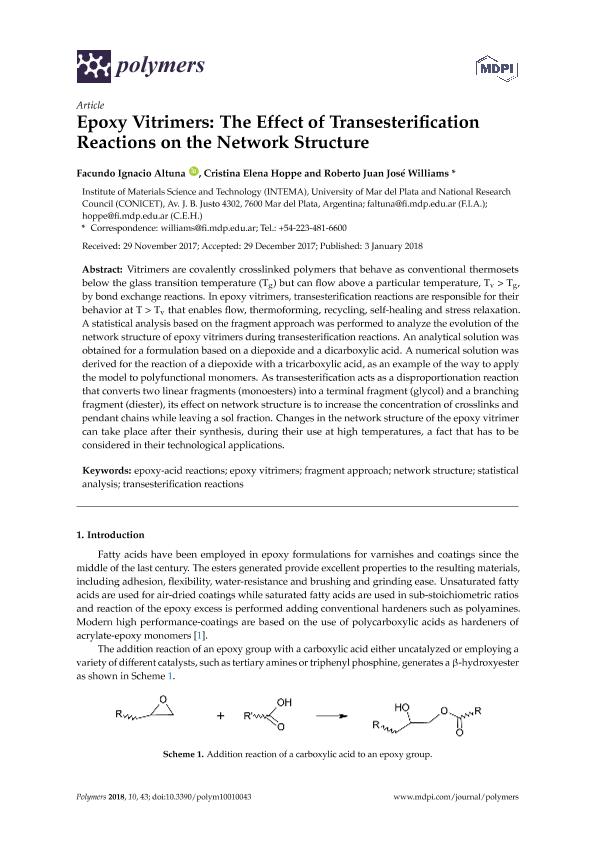Artículo
Epoxy vitrimers: The effect of transesterification reactions on the network structure
Fecha de publicación:
03/01/2018
Editorial:
MDPI AG
Revista:
Polymers
ISSN:
2073-4360
Idioma:
Inglés
Tipo de recurso:
Artículo publicado
Clasificación temática:
Resumen
Vitrimers are covalently crosslinked polymers that behave as conventional thermosets below the glass transition temperature (Tg) but can flow above a particular temperature, Tv > Tg, by bond exchange reactions. In epoxy vitrimers, transesterification reactions are responsible for their behavior at T > Tv that enables flow, thermoforming, recycling, self-healing and stress relaxation. A statistical analysis based on the fragment approach was performed to analyze the evolution of the network structure of epoxy vitrimers during transesterification reactions. An analytical solution was obtained for a formulation based on a diepoxide and a dicarboxylic acid. A numerical solution was derived for the reaction of a diepoxide with a tricarboxylic acid, as an example of the way to apply the model to polyfunctional monomers. As transesterification acts as a disproportionation reaction that converts two linear fragments (monoesters) into a terminal fragment (glycol) and a branching fragment (diester), its effect on network structure is to increase the concentration of crosslinks and pendant chains while leaving a sol fraction. Changes in the network structure of the epoxy vitrimer can take place after their synthesis, during their use at high temperatures, a fact that has to be considered in their technological applications.
Archivos asociados
Licencia
Identificadores
Colecciones
Articulos(INTEMA)
Articulos de INST.DE INV.EN CIENCIA Y TECNOL.MATERIALES (I)
Articulos de INST.DE INV.EN CIENCIA Y TECNOL.MATERIALES (I)
Citación
Altuna, Facundo Ignacio; Hoppe, Cristina Elena; Williams, Roberto Juan Jose; Epoxy vitrimers: The effect of transesterification reactions on the network structure; MDPI AG; Polymers; 10; 1; 3-1-2018; 43
Compartir
Altmétricas




